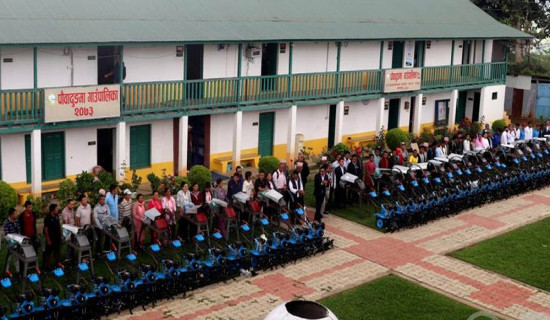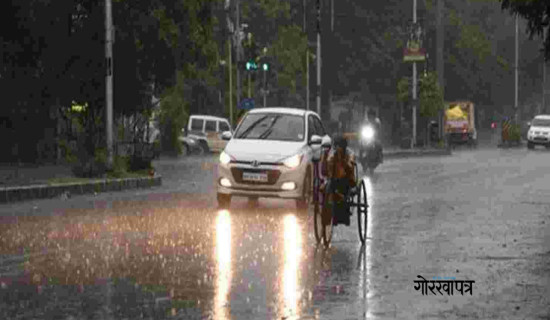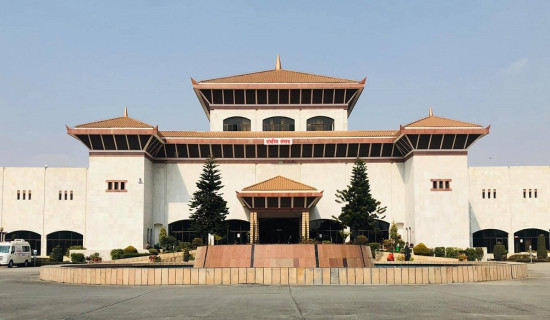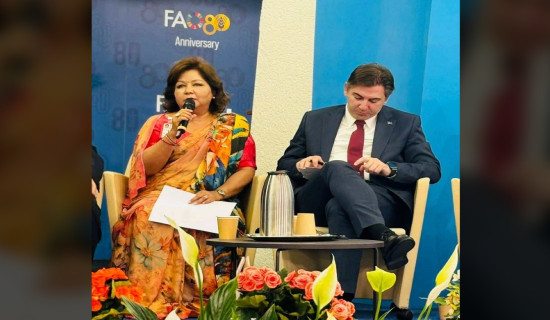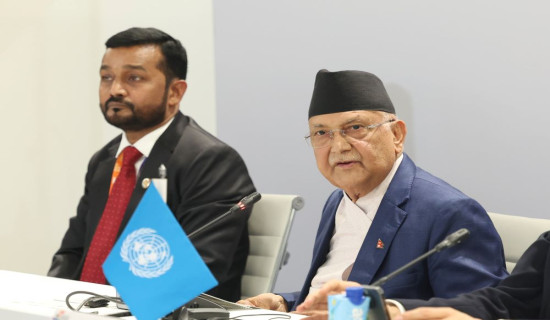- Wednesday, 2 July 2025
SHAMBHALA- A woman’s journey toward self in the lap of the Himalayas
‘Shambhala is predated in Tibetan Buddhism etymologies mythological paradise, including the Kalchakra Tantra. As per the mythical Buddhist kingdom of Shambhala, it is a place where love and wisdom reign and people are immune to suffering. It also means the ultimate paradise, a pure land on earth as recorded in Buddhist scriptures.
Min Bahadur Bham’s poignant and metaphorically rich story backed by powerful acting and cinematography has stirred movie critics internationally. Nevertheless, it has set an argument— whether our society is ready for art movies like this which has set forth the nudity of society without any glitters and leaves it upon its audiences to generate an unbiased conclusion.
Shambhala is a staggering fictional film about a woman, who plods herself in the domain of polyandry that exists at some high Himalayas. A drama about a newlywed woman on the path of existence and spirituality, the hubris and betrayal from her love and the turbulence her life enfolds, is exceptionally portrayed in the movie. The film has gained equal respect alongside other works of art. The more resides movie of an art film has elements of deeper meaning, quintessential plot, and social portrayal. It has showcased the tabooed elements of society that in today’s time demand a radical change rather than acceptance.
First off, the character of Pema as a young woman is breathtaking, she embarks on a journey as a young bride with dreams seeking faith in life. The tabooed culture of polyandry is what takes the story further. As per the tradition Pema gets married to 3 brothers in a family; Tashi, Karma, and Dawa. Like her mother who tells her before the marriage that despite many only one man remains close to her heart, hence Pema feels that Tashi is the one whom she loves eternally. The family feels complete with the arrival of Pema into the lives of her multiple husbands. She is placed as the heart of the family and caretaker of her youngest husband; 12-yearold Dawa. Her entire sense of what it means to be happy consists of her moments spent with Tashi. Life didn’t remain this easy for her as Tashi now has to go to Lhasa for trade for a few months. She doesn’t want Tashi to go away but cannot stop due to the harsh reality of sustaining her family. Now she is left behind by her other two husbands Dawa and Karma. The latter has opted to live in a monastery since the beginning. The very awkwardly accepted truth is that Dawa is her husband and since he is small, she is juggling the role of a mother. Utterly dissatisfied by Dawa’s bad performance in study and stubbornness she urges the school teacher to give home tuition.
One day she visits a monastery to meet Rinpoche (a spiritual master) to share her beautiful dream. There she finds that she is carrying a new life in her. Pema’s piousness makes Rinpoche believe that he wants to have his reincarnation in her womb. This- also is his dream and she can make it happen. Pema looks ahead to embark on giving birth to a child. She believes that her love Tashi would be equally happy with the news. To her disgrace, Tashi doesn’t return, upon finding she knows that he felt betrayed by Pema who is not carrying his child.
Pema had turned a deaf ear to the villagers who had made nasty comments about her character and made her shameful in society. Things turn upside down when Tashi even feels the same and Pema is left all alone amidst social criticism and falsity.
She now decided to find Tashi and head to Nangla Pass—the last location before vanished from his colleagues. To her surprise, Karma comes to accompany her with his master’s guidance on taking responsibility as a family man. Initially, they are not affectionate towards each other but slowly Karma feels happier around her. His words of wisdom saying, ‘the act of giving birth in itself is a very pious one” definitely confines Pema to embrace this gifted process of creating life. Yet she remains unbroken by the decision to meet Tashi and dignify her love. The journey is filled with immense hardship and the meeting is like a mirage. Pema continues towards her plan alone. By now she has understood that no one and nothing remains permanent in this world and we must find our path.
On her return home, she found many of her answers. She is still questioned by Tashi and society and feels betrayed when she is told to prove her innocence. Pema confronts that it is the child who would guide the way ahead for her. The film ends on an emotional yet metaphoric stance where Pema opts for the path of one’s existence and spirituality and reveals that she has found herself in SHAMBHALA through what the time offered her.
The journey to discover one’s existence and spirituality above all may seem unlikely but her journey has served as a metaphor for our need to find the tangled social narratives to date, especially for women who continue to be conditioned to accept is the essential factor that must be taken to free themselves from. Pema’s character is both young and innocent; yet sad and intense. We can feel her moments of melancholy and difficulties. Her portrayal is absolutely sincere and heart-fueled fuel that has made the art of fiction closer to real.
Our cinema needs exposure as it tells our story. Art has no boundaries and limitations since it is depicted from one’s heart and the helping hands matter a lot to bring forth such imagination of art into a form of cinema. Nepal still has a long way to go in art and story. Shambhala has given confidence that like our majestic Himalayas; our stories can stand atop.

Shradha Arjyal Joshi
The author is pursuing MPhil-PhD in International Relation from Tribhuvan University










